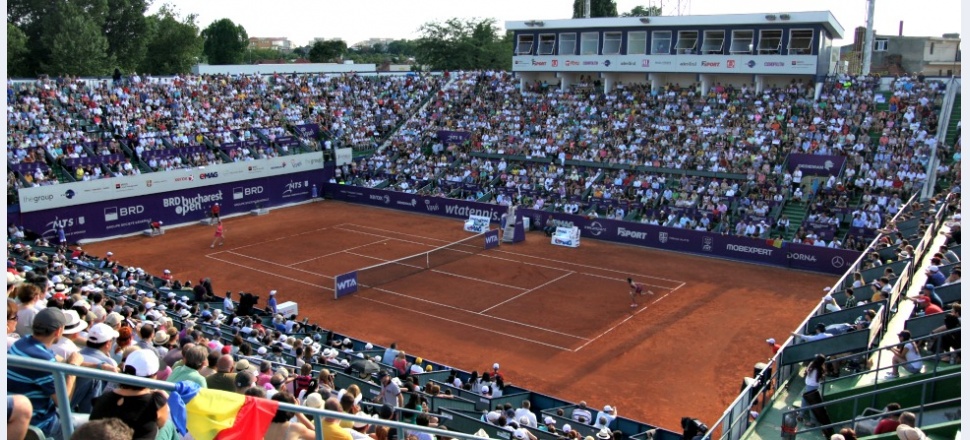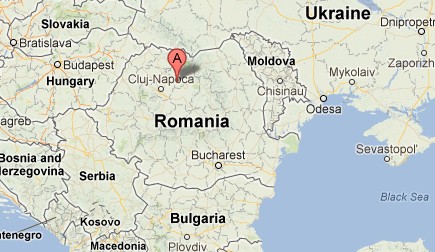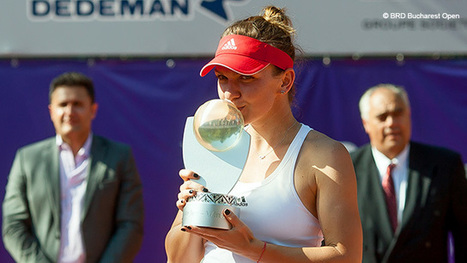DATE: July 11 to July 17, 2016
SURFACE: Clay
PRIZE MONEY: $226,750
FIELD SIZE: 32
DEFENDING CHAMPION: Anna Karolina Schmiedlova
Seeds:
1 HALEP, Simona
2 ERRANI, Sara
3 SCHMIEDLOVA, Anna Karolina
4 SIEGEMUND, Laura
5 NICULESCU, Monica
6 KOVINIC, Danka
7 SEVASTOVA, Anastasija
8 BUYUKAKCAY, Cagla

The Tournament:
The Bucharest Open (currently sponsored by BRD and called the BRD Bucharest Open) is a women's professional tennis tournament held in Bucharest, Romania. Held since 2014, this WTA International-level event is played outdoors on the red clay courts of the Romanian capital.
The Players:
Simona Halep and Sara Errani head the field.
About Bucharest
Location: Southern Romania
Elevation: 190-295 ft (55-90 m)
Size: City of Bucharest - 88 sq.miles (228 sq.km); Metropolitan area - 587 sq.miles (1,521 sq.km)
Inhabited since: 500 BC
First documented: 1459 AD
Population: 1.921 milion (2014)
Known for its wide, tree-lined boulevards, glorious Belle Époque buildings and a reputation for the high life (which in the 1900s earned its nickname of "Little Paris"), Bucharest, Romania's largest city and capital, is today a bustling metropolis.
Romanian legend has it that the city of Bucharest was founded on the banks of the Dambovita River by a shepherd named Bucur, whose name literarily means "joy." His flute playing reportedly dazzled the people and his hearty wine from nearby vineyards endeared him to the local traders, who gave his name to the place.
Calea Victoriei is Bucharest's oldest and arguably, most charming street. Built in 1692 to link the Old Princely Court to Mogosoaia Palace, it was initially paved with oak beams. The street became Calea Victoriei in 1878, after the Romanian War of Independence victory. Between the two world wars, Calea Victoriei developed into one of the most fashionable streets in the city.
Stroll along this street from Piata Victoriei to Piata Natiunilor Unite to discover some of the most stunning buildings in the city, including the Cantacuzino Palace, the historical Revolution Square, the Military Club, the CEC Headquarters and the National History Museum.
Perhaps the city's unique charm can be best observed in the area known as Lipscani, which consists of a jumble of streets between Calea Victoriei, Blvd. Bratianu, Blvd. Regina Elisabeta and the Dambovita River. A once-glamorous residential area, the old city centre is now slowly being refashioned into an upscale neighborhood.
At the beginning of 1400s, most merchants and craftsmen - Romanian, Austrian, Greek, Bulgarian, Serbian, Armenian and Jewish - established their stores and shops in this section of the city. Soon, the area became known as Lipscani, named for the many German traders from Lipsca or Leiptzig. Other streets took on the names of various old craft communities and guilds, such as Blanari (furriers), Covaci (blacksmiths), Gabroveni (knife makers) and Cavafii Vechii (shoe-makers). The mix of nationalities and cultures is reflected in the mishmash of architectural styles, from baroque to neoclassical to art nouveau.
Today, the area is home to many art galleries, antique shops and coffeehouses. On a beautiful day, you can stroll down the narrow cobblestone streets and imagine the shopkeepers outside near their stores, encouraging people to buy their merchandise and negotiating prices with them. Don't forget to stop by Hanul cu Tei, which is a rectangular courtyard between Strada Lipscani and Strada Blanari, home to an array of art and antiques shops.




Tourism Guide:
SURFACE: Clay
PRIZE MONEY: $226,750
FIELD SIZE: 32
DEFENDING CHAMPION: Anna Karolina Schmiedlova
Seeds:
1 HALEP, Simona
2 ERRANI, Sara
3 SCHMIEDLOVA, Anna Karolina
4 SIEGEMUND, Laura
5 NICULESCU, Monica
6 KOVINIC, Danka
7 SEVASTOVA, Anastasija
8 BUYUKAKCAY, Cagla

The Tournament:
The Bucharest Open (currently sponsored by BRD and called the BRD Bucharest Open) is a women's professional tennis tournament held in Bucharest, Romania. Held since 2014, this WTA International-level event is played outdoors on the red clay courts of the Romanian capital.
The Players:
Simona Halep and Sara Errani head the field.
About Bucharest
Location: Southern Romania
Elevation: 190-295 ft (55-90 m)
Size: City of Bucharest - 88 sq.miles (228 sq.km); Metropolitan area - 587 sq.miles (1,521 sq.km)
Inhabited since: 500 BC
First documented: 1459 AD
Population: 1.921 milion (2014)
Known for its wide, tree-lined boulevards, glorious Belle Époque buildings and a reputation for the high life (which in the 1900s earned its nickname of "Little Paris"), Bucharest, Romania's largest city and capital, is today a bustling metropolis.
Romanian legend has it that the city of Bucharest was founded on the banks of the Dambovita River by a shepherd named Bucur, whose name literarily means "joy." His flute playing reportedly dazzled the people and his hearty wine from nearby vineyards endeared him to the local traders, who gave his name to the place.
Calea Victoriei is Bucharest's oldest and arguably, most charming street. Built in 1692 to link the Old Princely Court to Mogosoaia Palace, it was initially paved with oak beams. The street became Calea Victoriei in 1878, after the Romanian War of Independence victory. Between the two world wars, Calea Victoriei developed into one of the most fashionable streets in the city.
Stroll along this street from Piata Victoriei to Piata Natiunilor Unite to discover some of the most stunning buildings in the city, including the Cantacuzino Palace, the historical Revolution Square, the Military Club, the CEC Headquarters and the National History Museum.
Perhaps the city's unique charm can be best observed in the area known as Lipscani, which consists of a jumble of streets between Calea Victoriei, Blvd. Bratianu, Blvd. Regina Elisabeta and the Dambovita River. A once-glamorous residential area, the old city centre is now slowly being refashioned into an upscale neighborhood.
At the beginning of 1400s, most merchants and craftsmen - Romanian, Austrian, Greek, Bulgarian, Serbian, Armenian and Jewish - established their stores and shops in this section of the city. Soon, the area became known as Lipscani, named for the many German traders from Lipsca or Leiptzig. Other streets took on the names of various old craft communities and guilds, such as Blanari (furriers), Covaci (blacksmiths), Gabroveni (knife makers) and Cavafii Vechii (shoe-makers). The mix of nationalities and cultures is reflected in the mishmash of architectural styles, from baroque to neoclassical to art nouveau.
Today, the area is home to many art galleries, antique shops and coffeehouses. On a beautiful day, you can stroll down the narrow cobblestone streets and imagine the shopkeepers outside near their stores, encouraging people to buy their merchandise and negotiating prices with them. Don't forget to stop by Hanul cu Tei, which is a rectangular courtyard between Strada Lipscani and Strada Blanari, home to an array of art and antiques shops.




Tourism Guide:
Last edited by a moderator:



